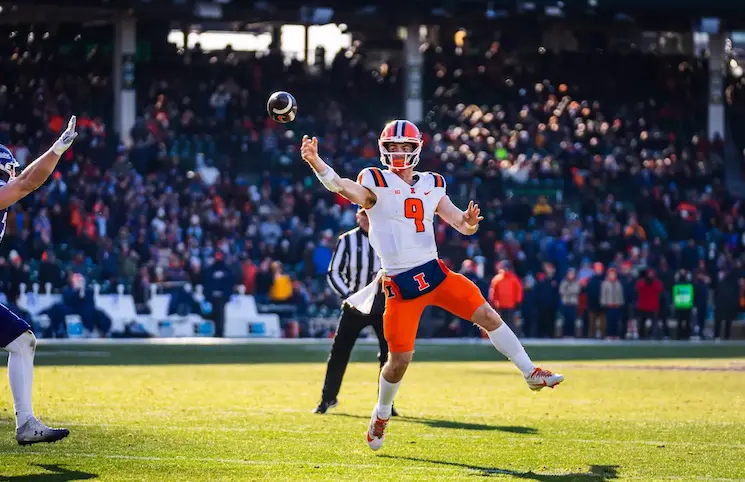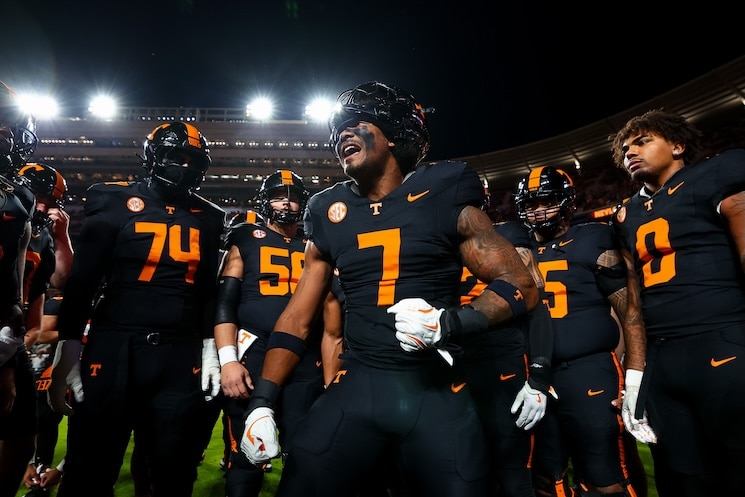
Much has been made during fall camp about the improvement Tennessee’s defensive players have shown in Year Two of Jeremy Pruitt’s defensive system. Though Pruitt has given up play-calling duties to Derrick Ansley, the defensive system is still his, and Ansley’s style won’t be much different than what Pruitt has implemented.
That begs the question: How have teams fared in the second year under Pruitt’s tutelage at his previous stops? What should Vol fans expect from Tennessee’s second defense under Pruitt?
Before being hired on as Tennessee’s head coach in December of 2017, Pruitt served as a defensive coordinator at three different schools. Pruitt was an acclaimed defensive play-caller for Florida State, Georgia, and Alabama before coming to Knoxville. His defenses were among the best in the nation, but how much did his defenses improve after learning his system for a year?
Pruitt was only at Florida State for a season, so we can’t look at the Year Two bump for the Seminoles. But Pruitt spent two seasons at both Georgia and Alabama, so we’ll take a look at how his defenses changed statistically from Year One to Year Two at both stops.

Georgia
When Pruitt took over as the Bulldogs’ defensive coordinator in 2014, he was tasked with turning around a defense that gave up 29 points and 375.5 yards per game in 2013. In his first year, Pruitt helped Georgia make some significant strides on the defensive front.
Georgia allowed just 20.7 points a game and only 337.2 yards per game in 2014. The Bulldogs also gave up just 4.84 yards per play and accumulated 28 sacks, good for 2.15 sacks per game. They also forced 29 turnovers on the season and totaled 71 tackles for loss.
Two areas that didn’t grade out well from that season were Georgia’s third down defense and their red zone defense. The Bulldogs allowed opponents to convert on third down 39.27 percent of the time and allowed a score in the red zone 77.5 percent of the time.
In Pruitt’s second year manning the defense, the Bulldogs showed improvement in nearly every statistical category.
Georgia’s points per game allowed dropped to 16.9, and their yards allowed per contest fell to just 305.9. The Bulldogs gave up just 4.76 yards per play and had a total of 76 tackles for loss (5.84 per game). While their sack numbers (21) ad turnover numbers (22) went down, every other category was improved from the first year, and that includes a major jump in third down and red zone defense.
Pruitt’s second defense at Georgia saw the Bulldogs hold opponents to just a 28.93 percent conversion rate on third down, over 10 percentage points better than the previous season. Opponents also scored just 67.65 percent of the time in the red zone against Georgia.
And Georgia’s improvement in Year Two came despite the Bulldogs only returning five starters on defense from their 2014 roster.
The Year Two bump was evident for the Bulldogs in 2015, and Georgia had one of the best overall defenses in the SEC that season. Pruitt’s system paid off big time, though he wasn’t retained after the season after Mark Richt was fired as head coach.
Alabama
After his two years at Georgia, Pruitt was brought back to Alabama to serve as Nick Saban’s defensive coordinator. Pruitt was the Tide’s defensive backs coach for several seasons before being hired as Florida State’s defensive coordinator in 2013, and he was brought in to make an already elite defense even better.
Alabama had the top scoring defense in the SEC in 2015, and they gave up the fewest yards per game in the conference as well. Yet Pruitt was able to improve on that in his first year as DC for the Tide.
In Pruitt’s first year at Alabama, the Tide gave up just 13 points per game and only 261.8 yards per game. Alabama held opponents to a paltry 63.9 yards per game on the ground in Pruitt’s first season as defensive coordinator, and they forced 29 turnovers while totaling a whopping 54 sacks (3.6 per game). The Tide’s defense also amassed 118 tackles for loss and gave up just 3.99 yards per play. The third down defense was also stellar, holding opponents to just a 30.67 percent conversion rate.
The one area of concern for Alabama in 2016 on defense was their red zone defense. The Tide allowed teams to score 84 percent of the time in the red zone in 2016. Otherwise, their defense was phenomenal.
With numbers like that, surely Alabama’s defense took a step back in Pruitt’s second year, right?
Wrong.
Alabama’s defense somehow got even better in 2017, though they were slightly less efficient in some areas. The Tide gave up a mere 11.9 points and 260.4 yards per game in Year Two under Pruitt. While Alabama’s rush defense slipped a little (94.7 yards allowed), their pass defense stepped up, holding opponents to 165.7 yards a game. The Tide managed just 40 sacks after totaling 54 the previous season, but their tackles for loss totals weren’t far off (7.21 per game in 2017 compared to 7.87 a game in 2016).
The Tide’s defense also saw a slight regression in the turnover department and on third downs. Alabama forced 24 turnovers in 2017 after taking away the ball 29 times in 2016, and they allowed opponents to convert 34.58 percent of the time on third down compared to a 30.67 percent rate in 2016.
But Alabama’s red zone defense improved drastically in Pruitt’s second year, going from giving up a score 84 percent of the time inside the 20-yard line in 2016 to allowing a score 75 percent of the time in 2017.
And just like with Georgia, all of that improvement came with Alabama returning just five defensive starters from the previous season.
All of that improvement, along with an explosive offense, helped Alabama win a national title in 2017. And it was that defensive prowess and his strong developmental skills that convinced Tennessee Athletics Director Phillip Fulmer to hire Pruitt as UT’s head coach.

What About 2019?
Tennessee isn’t anywhere close to the same level Pruitt’s Georgia and Alabama teams were. The Vols do have talent on the defensive side of the ball, but it’s not comparable to what Pruitt had with the Bulldogs and Tide in 2015 and 2017, respectively. But Tennessee does have a leg up on those teams in one regard, and that’s in returning experience.
The Vols return six starters on defense from 2018, and while that’s only one number better than what Georgia and Alabama boasted, there are a number of returning faces from last year’s roster who weren’t starters. Players like Trevon Flowers, Matthew Butler, Deandre Johnson, Greg Emerson, and Shanon Reid weren’t full-time starters last season, but they figure to play big roles for the Vols’ defense in 2019.
Granted, Tennessee does have a lot of inexperience on the defensive line, especially with Emmit Gooden sustaining a season-ending injury in fall camp. But the Vols’ secondary is full of returning talent, and the linebacking corps is a solid mix of experienced veterans and promising youngsters.
Not only do the Vols return a good amount of production, but they have plenty of room for improvement in Year Two of Pruitt’s defensive philosophy as well.
The Vols gave up 27.9 points and 377.4 yards a game last season along with 5.67 yards per play. All of those numbers are career-worsts for Pruitt’s defenses in the SEC. Tennessee managed 25 sacks (2.08 per game), but they only totaled 68 tackles for loss (5.67 per game). The Vols also forced a mere 15 turnovers, easily the worst total of Pruitt’s career as a defensive play-caller.
Tennessee’s third down and red zone defenses weren’t great, either. The Vols allowed teams to convert at a 38.96 percent rate on third down, and they gave up a score a whopping 91.11 percent of the time in the red zone.
If the Vols follow what Georgia and Alabama did in their second years under Pruitt, expect to see a drop in the amount of points and yards allowed per game in 2019 compared to last year. The Vols’ sack totals and tackles for loss totals will be interesting to gauge, but history says UT should improve their turnover numbers based on how good Pruitt’s defenses have been in the past at turning the ball over. Tennessee’s red zone defense will surely show a good amount of improvement, too.
The Vols’ offense is more experienced and has greater expectations placed on them with the addition of Jim Chaney as offensive coordinator. But UT’s defense could be in line for some solid improvement in 2019, and that would go a long way to helping the Vols achieve their goals in Pruitt’s second year as head coach.



